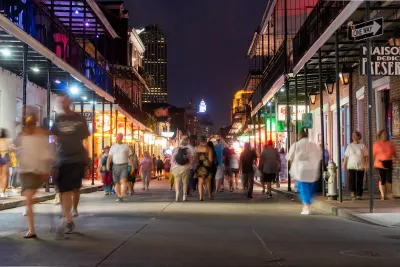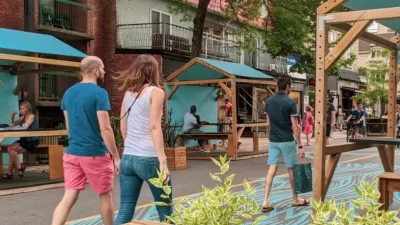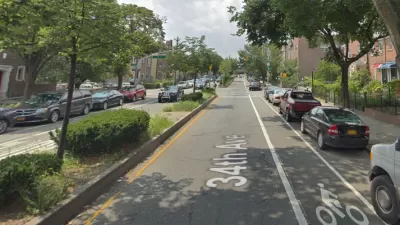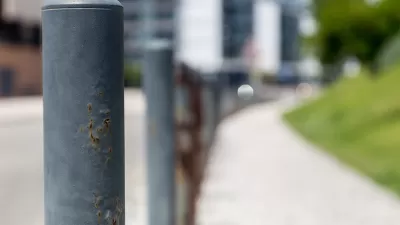The conversation around pedestrianizing public streets isn’t new — think Times Square. Could one of America’s oldest streets lead the way in a revival of the pedestrian mall?

Pedestrian malls, while rarer than in European cities, aren’t new to the United States. Times Square, Santa Monica’s Third Street Promenade, and Fremont Street in Las Vegas are just a few examples of pedestrianized zones in U.S. cities (some more quasi-public than others).
In fact, according to a Streetsblog USA article by Kea Wilson, “city leaders blocked cars from entering more than 200 downtown pedestrian malls across America throughout the 1960s and '70s, hoping to replicate the success of the shopping-oriented pedestrian plazas that are a fixture across much of Europe.” But the isolated locations of many of these plazas and the lack of cultural connection with the concept led to the failure of many to thrive.
The New Year’s attack on Bourbon Street, perpetrated in part with a large truck and aided by a lack of robust safety infrastructure, sparked a new call to pedestrianize Bourbon Street in New Orleans and make it safe for people walking all the time rather than on select occasions, with advocates saying that “pedestrianizing Bourbon Street would simply strengthen the temporary barriers that are already supposed to go up during periods of peak foot traffic but often don't, immediately making the tourist Mecca safer from all manner of vehicular threats.”
Closing a space permanently to cars can make it easier and more affordable to build secure infrastructure and limit ingress while still planning for emergency vehicles. If an already popular pedestrian destination like Bourbon Street would commit to it, other U.S. cities might follow suit.
FULL STORY: Could the Comeback of the U.S. Pedestrian Mall Start on Bourbon St.?

Study: Maui’s Plan to Convert Vacation Rentals to Long-Term Housing Could Cause Nearly $1 Billion Economic Loss
The plan would reduce visitor accommodation by 25,% resulting in 1,900 jobs lost.

North Texas Transit Leaders Tout Benefits of TOD for Growing Region
At a summit focused on transit-oriented development, policymakers discussed how North Texas’ expanded light rail system can serve as a tool for economic growth.

Using Old Oil and Gas Wells for Green Energy Storage
Penn State researchers have found that repurposing abandoned oil and gas wells for geothermal-assisted compressed-air energy storage can boost efficiency, reduce environmental risks, and support clean energy and job transitions.

Santa Barbara Could Build Housing on County Land
County supervisors moved forward a proposal to build workforce housing on two county-owned parcels.

San Mateo Formally Opposes Freeway Project
The city council will send a letter to Caltrans urging the agency to reconsider a plan to expand the 101 through the city of San Mateo.

A Bronx Community Fights to Have its Voice Heard
After organizing and giving input for decades, the community around the Kingsbridge Armory might actually see it redeveloped — and they want to continue to have a say in how it goes.
Urban Design for Planners 1: Software Tools
This six-course series explores essential urban design concepts using open source software and equips planners with the tools they need to participate fully in the urban design process.
Planning for Universal Design
Learn the tools for implementing Universal Design in planning regulations.
Ascent Environmental
Borough of Carlisle
Institute for Housing and Urban Development Studies (IHS)
City of Grandview
Harvard GSD Executive Education
Toledo-Lucas County Plan Commissions
Salt Lake City
NYU Wagner Graduate School of Public Service





























